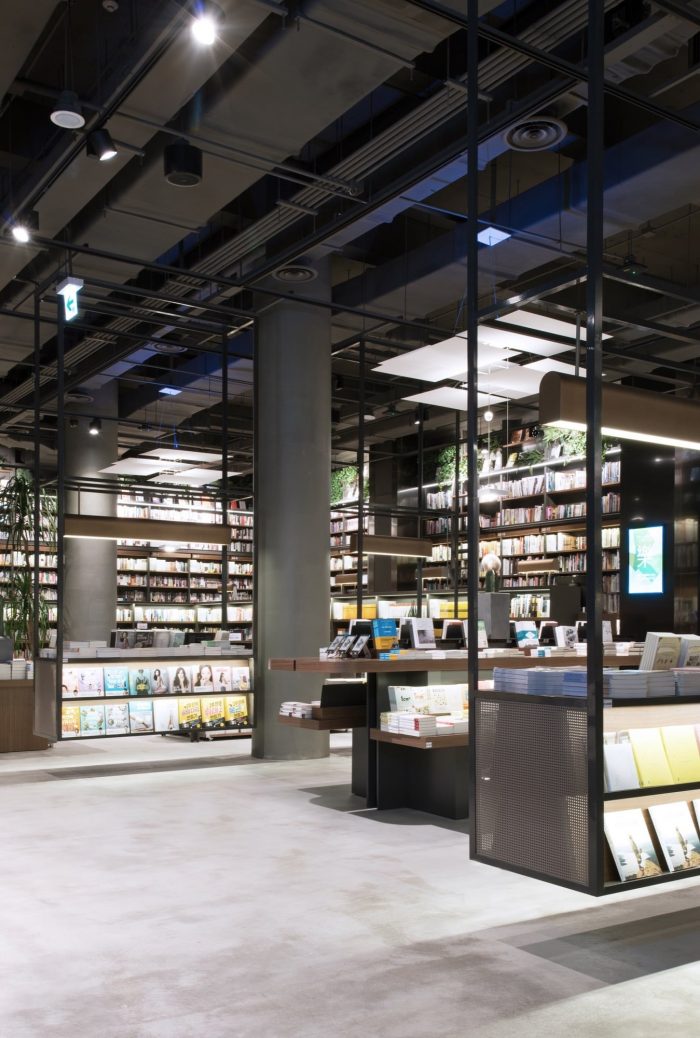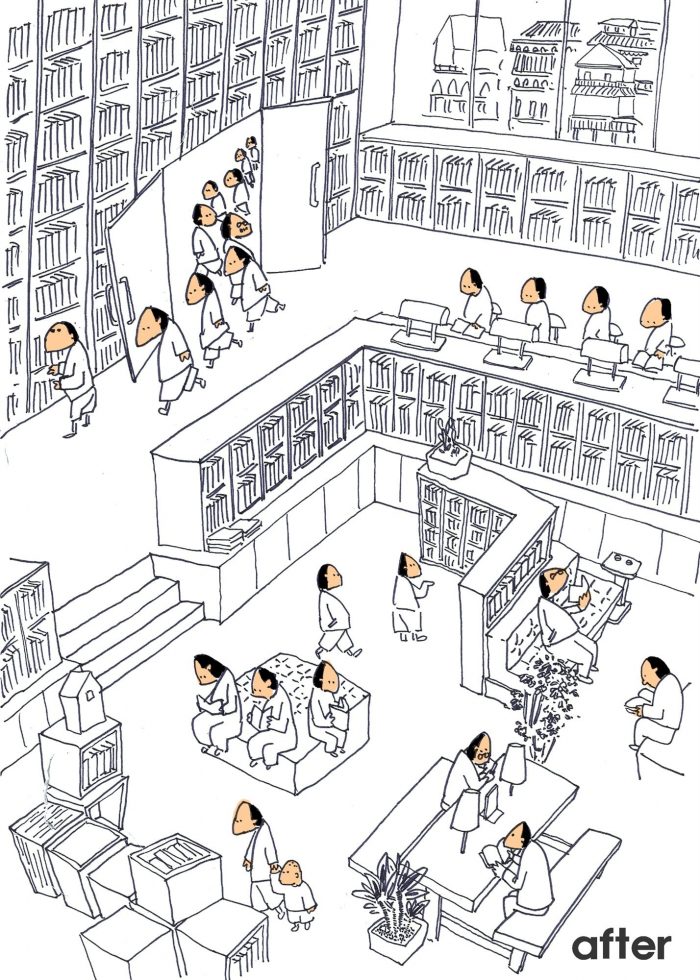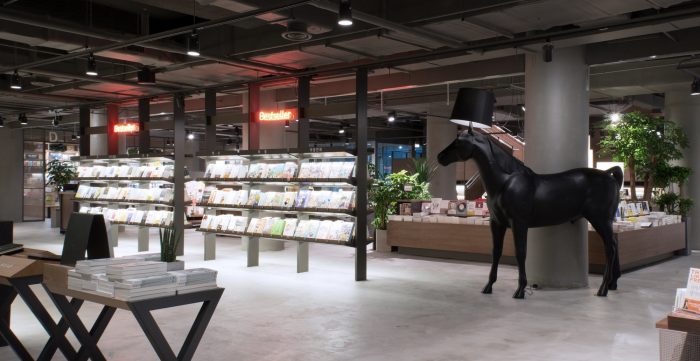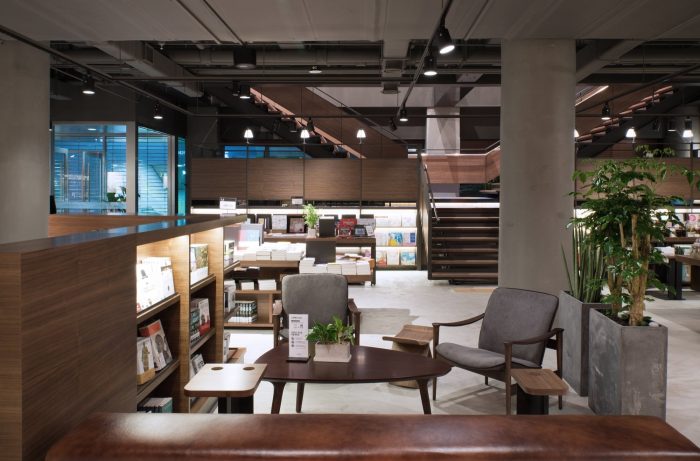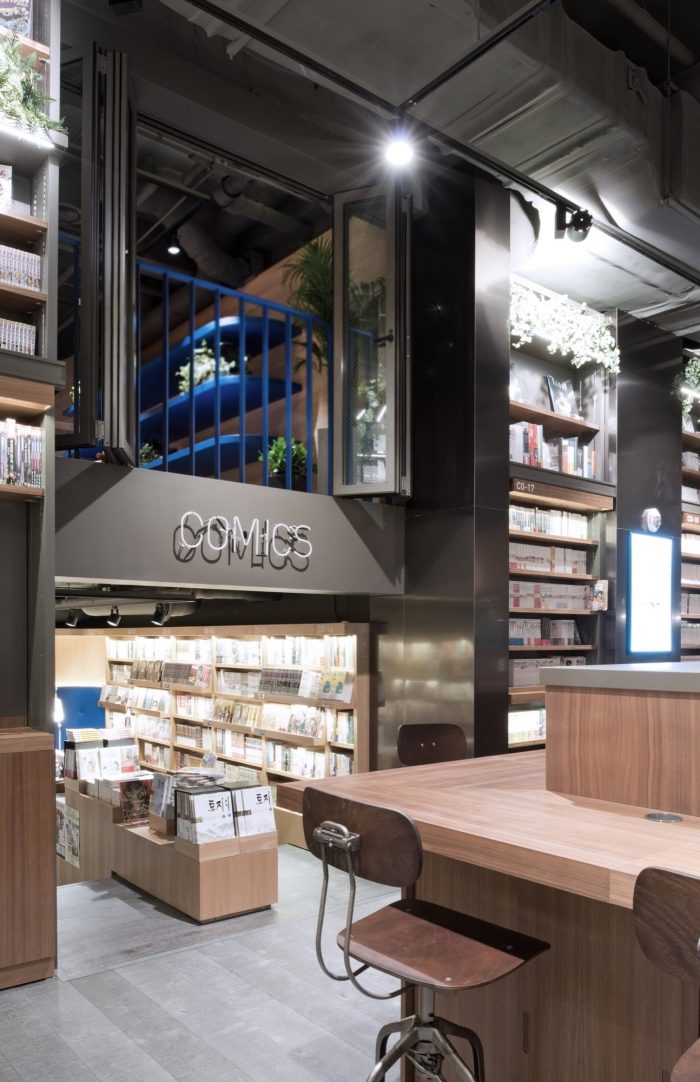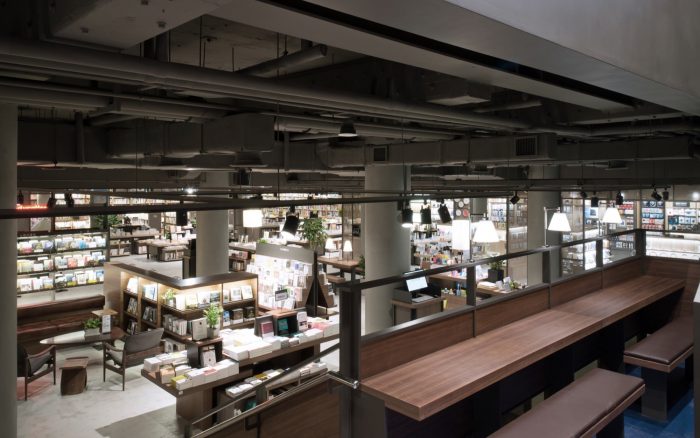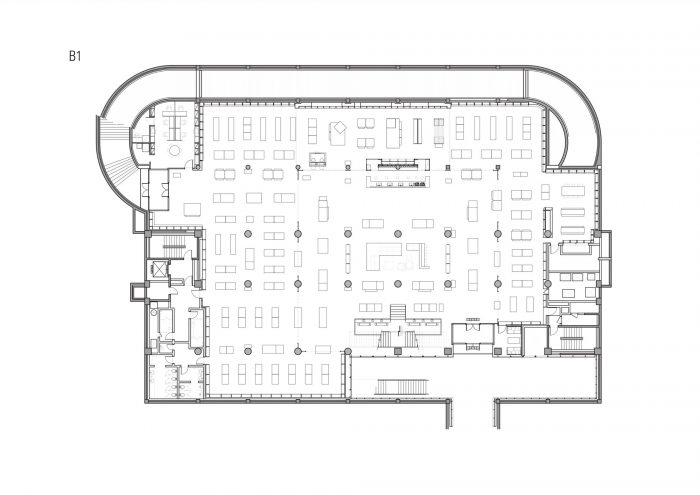商业空间的设计基本上反映了生活方式的变化。釜山西面的Kyobo图书中心用两张暗示性的图片展示了这样的变化。两幅草图讲述了这个空间的前后变化。现有书店的空间结构使购买者忙于选择、购买和外出,而改变后的空间被设计成一个人们即使不买书也能轻松参观和逗留的地方。低矮的书架和开放的空间使这个书店成为一个人们愿意长时间停留的空间。设计师选择了Agora,一个在古希腊城邦中形成的广场,作为这个空间的动机。亚高拉是当时的广场、市场、讲故事的地方,是人们自由讨论政治、经济和社会的空间。亚高拉是希腊人日常生活的中心,这是一个开放的空间,为附近的居民或那些访问它的人在日常生活中定居,不管是买书还是没有。因此,它是一个形成文化的日常生活空间,设计师计划在这个项目中创造这样一个空间。
Design for commercial space reflects the changing lifestyle basically. Kyobo book Center at Busan Seomyeon shows such a change with two implicative images. Two images of sketch tell the before and after of this space. While the space of existing bookstore had the structure which made purchasers busy to choose, to buy and to go out, the changed space is designed to be a place where people can visit and stay easily even though buying no books. Low bookshelves and open space make this bookstore be a space where people want to stay for a long time. Designer chose Agora, a plaza formed in polis ancient Greek city state, as a motive of this space. Agora is the day was plaza, marketplace, place with storytelling, and such a space where people discussed about politics, economy and society freely. The Agora was the center of daily life for Greek people, this is an open space settled in the daily life for neighboring residents or those who visit it, regardless of buying books or not. Consequently, it was a space of daily life forming culture in it, and the designer plans to create such a space at this project.

釜山西面的京博图书中心由第一层和地下一层组成。在一楼,畅销书被安排在前面,以入口为中心,其布局反映了韩国的特殊性。在诗人、小说、文化和散文的角落后面,是杂志、唱片和漫画的角落。研讨区位于漫画角的上方。地下室的空间通过在两边扩大楼梯并形成一个大的空隙,给人以两层楼的开放感。它的每个部分都被透视墙所分割。透视墙通过使用穿孔板对空间进行分类。
Kyobo Book Center at Busan Seomyeon consists of the first floor and the first basement. On the first floor, the best-sellers are arranged at the front centering around the entrance, and its layout reflects Korean peculiarity. Behind the corners of poet, novel, culture and essay, corners of magazine, record figure and cartoon are situated. Seminar area is located above the cartoon corner. Space of basement gives the sense of openness to the two floors by expanding stairway on both sides and making a large void. It is divided with see-through walls by each part. The see-through walls categorize the space by using perforating panels.
地下室的书架是按类别划分的,但由于主要人流线、图书区和HPTTRACTS区的透视墙,它们保持了开放空间的总体概念。在地下室的中间,有一个像广场一样的休息场所,这与自然相协调。有各种类型的区域,但基本上,设计师创造了休息的地方,人们可以在阅读时自然地相互交流。从收银区的垂直花园开始,内部园艺发挥了美学作用,以替代标志或放松干燥的空气。
The bookshelves on the basement are divided by categories but they maintain the general concept of open space due to the see-through walls at main human traffic line, books area, and HPTTRACTS area. In the middle of the basement, there is resting place like a plaza, which harmonizes with nature. There are various types of areas, but basically, the designer creates resting place where people can mingle each other naturally while reading. Inner gardening plays the aesthetic role to substitute for signs or to relax dry air, starting from the vertical garden at the cashier area.
Architects: WGNB
Area : 1860 m²
Year : 2015
Photographs :Taeho Jung
Manufacturers : Ingo Maurer, Sungan D&C
Text : Jihyun Lee
Collaborators : Jonghwan Baek, Sungchil Park
City : Busan
Country : South Korea



